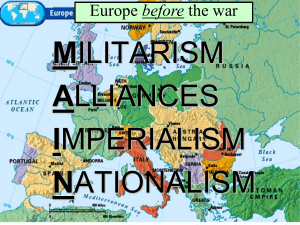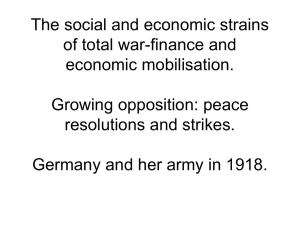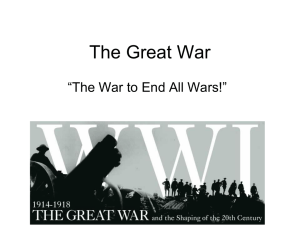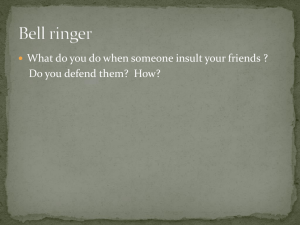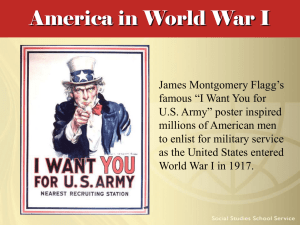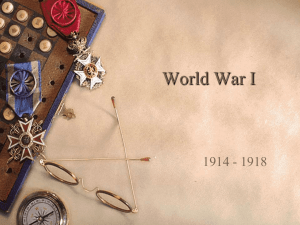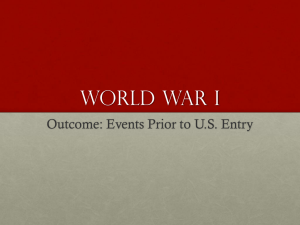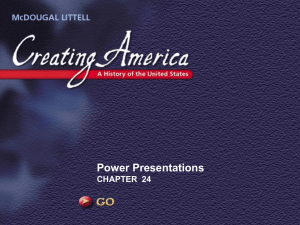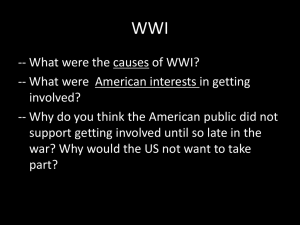Over There - Mrfarshtey.net
advertisement
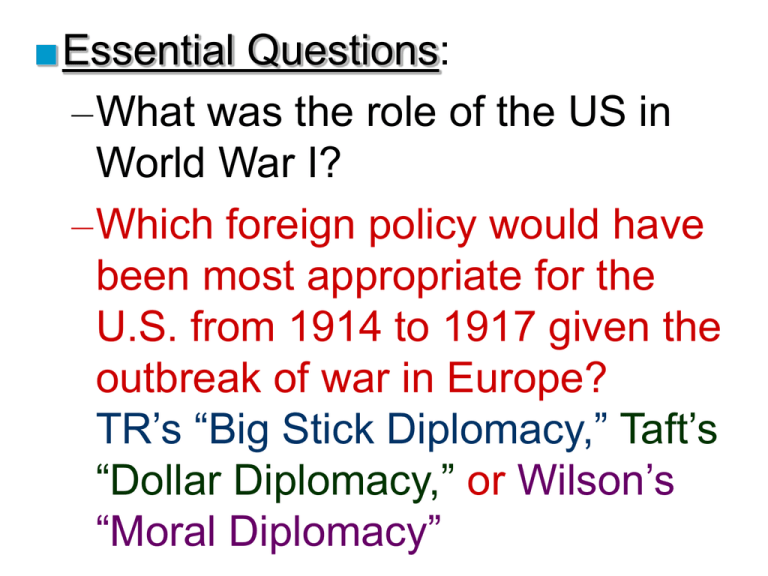
■Essential Questions: –What was the role of the US in World War I? –Which foreign policy would have been most appropriate for the U.S. from 1914 to 1917 given the outbreak of war in Europe? TR’s “Big Stick Diplomacy,” Taft’s “Dollar Diplomacy,” or Wilson’s “Moral Diplomacy” American Neutrality ■When war was declared in Europe in June 1914, Wilson proclaimed American neutrality due to: –Tradition of non-involvement –Progressives & women organized against war –America as a land of immigrants should not take sides in Europe ■The majority of the U.S. supported the Allies but wanted to avoid war Germany blamed England appealed to Threats to American the Neutrality war on cultural ties & propaganda expansion neutrality threatened of■U.S. German atrocities wasRussian & French revenge from the very beginning: –England & Germany appealed to the U.S. to enter on their side –U.S. trade with England & France provided a strong bond –The most serious threat proved to be Germany’s violation of the right to “freedom of the seas” Freedom of the Seas ■England began a blockade around By 1916, the U.S. was a “neutral”to nation in name Germany cut off war only supplies: –Wilson protested that the The U.S.blockade gave $2.5 billion in loans the Allies, infringed on to America’s but only $27 million to the Central Powers right to trade as a neutral nation Trade–But with the Allies caused U.S. trade to jump the flood of Allied war orders from $2 billion to $6 billion from 1913 to 1916 helped fuel the U.S. economy –Loans & trade drew the U.S. closer to the Allies while trade with Germany all but ended The U-Boat Threat ■Germany’s response to the British blockade was unrestricted submarine warfare in 1915: Despite the Sussex Pledge, Congress passed –Americans died Act during u-boat the National Defense in 1916 that increased the size of theLusitania, U.S. army & navy attacks on the Arabic, & Sussex from 1915 to 1916 –In the Sussex Pledge, Germany agreed to limit attacks if the U.S. helped end England’s blockade Germany used U-boats to create a naval blockade of England Election of 1916 ■In the 1916 election, Wilson balanced contrasting stances: –He appealed to progressives & anti-war voters with the slogan “He kept us out of war” –But argued for “preparedness” by building up the military in case the U.S. joins the war ■Wilson won by affirming 2 goals: freedom of the seas & neutrality German leaders knew this might entice the America Joins the Allies USA to enter the war…but did it anyway ■In December 1916, Germany led a massive European offensive & resumed unrestricted submarine warfare to win the war ■In 1917, Wilson hoped for a “peace without victory” but key events made neutrality impossible: –German subs sunk 5 U.S. ships –The interception of Zimmerman Telegram fueled U.S. anger U.S. Losses to German Submarines, 1916-1918 Rationale behind the Zimmerman Note: The U.S. & Mexico almost went to war in June 1916 over events related to the Mexican Revolution (Huerta, Carranza, Pancho Villa) April 2, 1917, Wilson asked Congress for a declaration of war to “make the world safe for democracy” “Over There” American Military Participation in WW I When the U.S.& entered the war1914-1917 in 1917, WW I Alliances Battlefronts, the Allies were on the brink of defeat Mutinies were common in the French army & the British lost at Flanders, Belgium U-boats effectively limited The Russian armistice in 1917 Allied supplies allowed Germany to move its full army to the western front The army & navy Mobilization increased in size but military leaders had not prepared a plan for war (“To plan named to for■Wilson war is to violate theJohn terms Pershing of neutrality”) head the American Expeditionary Force (AEF), but despite Wilson’s preparedness campaign, the U.S. was not prepared for full scale war ■Many wanted a volunteer army, but Wilson pressed Congress to pass a Selective Service Act (24 million registered & 2.8 million were drafted to fight in Europe) African-Americans were subject to the draft & fought in segregated units The 1st U.S. troops arrived via convoy in June 1917 but did not see action until early 1918 The AlliedAmerican counter-attack soldiers ledsaw by their the 1st U.S. & France actionpushed in May into 1918 Germany at Chateau Thierry outside Paris & helped resist a last-ditch German offensive The U.S. on the Western Front, 1918 War in the Trenches ■The arrival of fresh American soldiers & war supplies raised Allied morale at a crucial time: –By October 1918, the German gov’t knew the war was over –Turkey, Austria-Hungary, & Bulgaria were all out of the war –Nov 11, 1918 Germany signed an armistice with the Allies 9 million soldiers & U.S. had only 320,000 Conclusions American soldiers 5 million civilians died casualties (6.8%) were■The only engaged in “Great War” was a total war Artillery, gas, grenades, battlebut forpoison 8 months Allies faced 52% the U.S. effort paled in machine guns led to trench casualties; the Central warfare & war of attrition comparison to other Allied forces: Powers had 57% –The U.S. reluctantly entered WW I after 3 years of neutrality & played a supportive (not a central) military role in the war –But, WW I had a huge impact on the American economic, political, & cultural homefront
